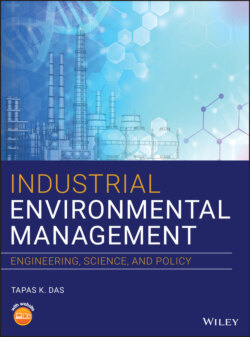Читать книгу Industrial Environmental Management - Tapas K. Das - Страница 28
Mini‐Case Study 1.1 Beer to Mushrooms: Focusing on the Productivity of Raw Materials
ОглавлениеIn the town of Tsumeb in the African desert, Namibian nationals will be implementing Zero Emissions technology at a brewery inaugurated in January of 1997. The three main inputs into beer – grain, water, and energy – are scarce commodities in a developing nation. Brewing uses only 8–10% of the nutrients in grain, consumes 10 L of water for every liter of beer produced, and generally requires imported coal, an expensive and polluting energy source.
The lignin‐cellulose component of spent grain, which makes up 70–80% of its bulk, is indigestible to cattle, but it is easily broken down by the enzymes of mushrooms. It takes 4 T of spent grain to produce 1 T of mushrooms, which are a potentially lucrative cash crop for export, because most southern African nations currently import mushrooms. The protein content of the spent grain – up to 26% – is used by earthworms, which in turn are fed to chickens and pigs. Processing the waste from the animals in a digester could supply all of the vapor energy required for brewing. Brewery wastewater is high in nutrients but is too alkaline for crops. However, it can be used to grow spirulina, which generate up to 70% protein.
The brewery's thermal waste could heat greenhouses or the brewery. These interrelated industries will form an optimal industrial cluster for increasing the productivity of the brewery's raw materials in ways that also produce food for humans that is high in nutritional value.
